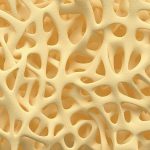 Laboratories have been growing diamonds for industrial applications since the 1950s. However, the technology to create gem quality diamonds has only been developed relatively recently. “Synthetic” diamonds actually have the exact same physical structure and chemical composition as a diamond that’s been mined from the ground. To create a diamond that measures up to Mother Nature, you start the same way you would with other lab-grown gems such as sapphires – with a seed.
Laboratories have been growing diamonds for industrial applications since the 1950s. However, the technology to create gem quality diamonds has only been developed relatively recently. “Synthetic” diamonds actually have the exact same physical structure and chemical composition as a diamond that’s been mined from the ground. To create a diamond that measures up to Mother Nature, you start the same way you would with other lab-grown gems such as sapphires – with a seed.
A “carbon seed,” which is a tiny fragment of diamond, is placed into a laboratory microwave along with varying amounts of a carbon-heavy gas – usually methane. The gas mixture is heated to very high temperatures in the microwave to produce a plasma ball. This breaks down the gas, causing its carbon atoms to crystallize and accumulate on the diamond fragment, causing it to grow. Although it sounds simple, the process can take up to 10 weeks to produce a marketable diamond.
Currently, lab-grown diamonds make up a small portion of the jewelry market. However, they have very marketable features. Lab-grown diamonds are 100% eco-friendly, conflict-free, and cheaper than natural diamonds of similar quality. Bloomberg reports that in a New York jewelry store, a 1-carat synthetic diamond can cost about $6,000, compared to $10,000 for a similarly sized natural diamond. With those kinds of selling points, the synthetic diamond market definitely has growth potential.











